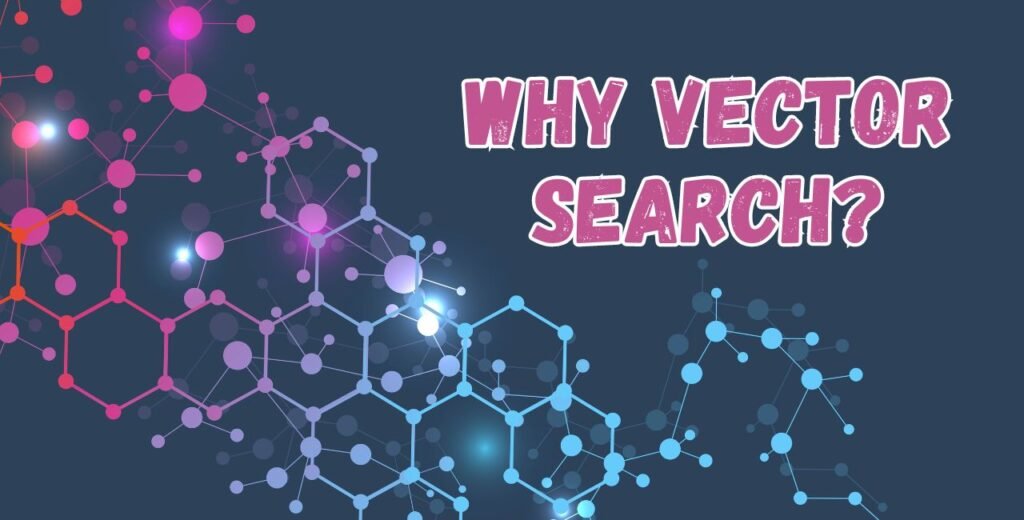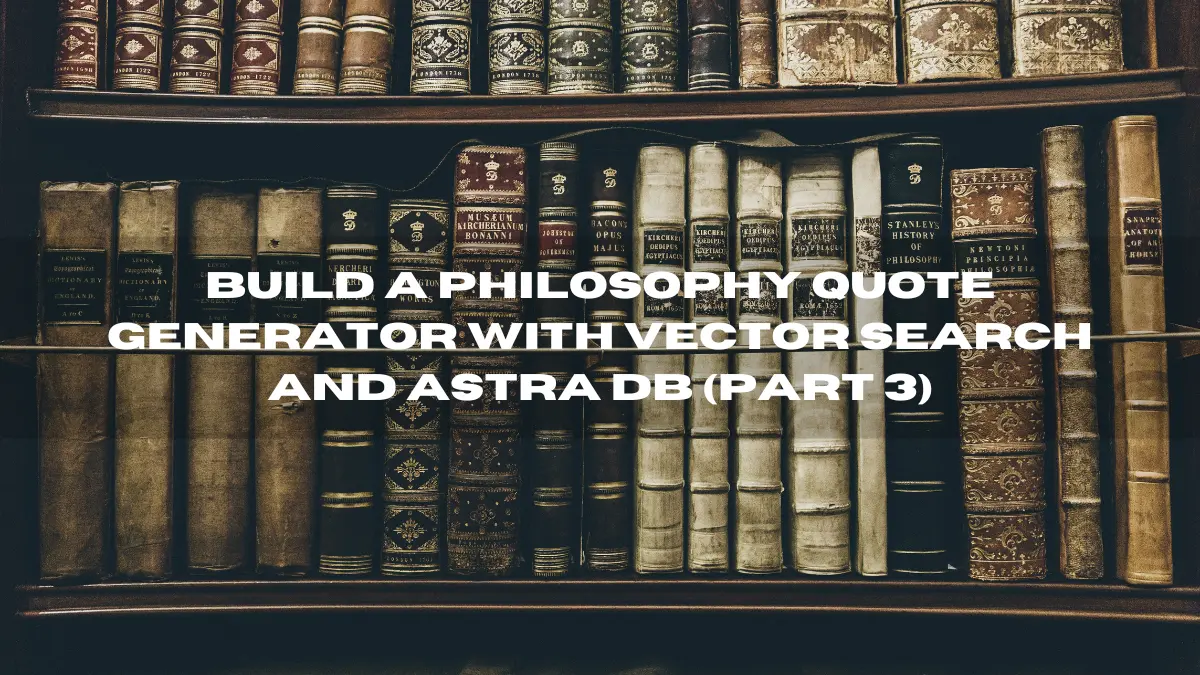This is the third and last part of a mini-series about Build a Philosophy Quote Generator with Vector Search and Astra DB. In this article, we are going to tell you the way of building the philosophy quote generator with vector search and astra db.
How Does the Philosophy Quote Generator Work
In Vector, every quote is embedded with an embedding system. These are stored in Vector for later use in looking. Some metadata, including the writer’s name and some different pre-computed tags, are saved to allow for search customization.
To find a quote like the given search quote, the latter is made into an embedding vector on the fly, and this Vector is used to save for comparable vectors I.E., Similar quotes that had been previously listed. The search can optionally be constrained by additional metadata. The key factor right here is that “quotes comparable in content” interprets, in vector space, to vectors which can be metrically close to each other: accordingly, vector similarity search efficiently implements semantic similarity. This is the important thing vector embeddings are so effective.
Each quote, once it is made into a vector, is a factor in area. Well, this example is on a sphere, in view that OpenAI’s embedding vectors, like most others, are normalized to unit duration. Oh, and the sphere is clearly now not 3-dimensional, but rather 1536-dimensional!
Construct the Quote Generator
Now, we build the application part, by entering text and use LLM to generate a new “philosophical quote,” similar in tone and content to present entries.
Also Read:- Optimizing Server Management with HAProxy Advanced Health Checks | Demystifying Virtual Thread Performance: Unveiling The Truth Beyond The Buzz
Retrieval-Augmented Generation (RAG)
Retrieval-augmented generation (RAG) is a natural language processing (NLP) model that mixes key components: a generator and a retriever.
- Generator: This part creates new content and includes sentences or paragraphs, usually primarily based on large language models (LLMs).
- Retriever: This part retrieves relevant data from a predetermined set of files or data.
In simple phrases, RAG uses the retriever to discover beneficial records from a series of texts, and then the generator uses that data to enhance its LLM-based total education to create new, coherent text. This technique helps enhance the satisfactory and relevance of AI-generated content by leveraging new and regularly more area-precise understanding out of doors of the widespread dataset used to train the authentic LLM. It’s generally used in tasks like answering questions or summarizing text.
RAG integrates those two approaches, allowing builders to apply a wealth of existing knowledge to augment LLMs to improve the generation of recent, contextually applicable content.
Implementing Quote Generation
You will compute the embeddings for the quote and shop them into the Vector Store at the side of the text itself, and the metadata deliberate for later use.
To optimize speed and decrease the calls, you’ll carry out batched calls to the embedding OpenAI service. The DB write is achieved with a CQL declaration. But because you’ll run this specific insertion in numerous instances (albeit with distinctive values), it is fine to put together the announcement and then just run it again and again.
Why Vector Search?

In a normal GenAI utility, big language models (LLMs) are hired to provide textual content. For example, solutions to customers’ questions, summaries, or tips are based totally on context and beyond interactions. But in most cases, one cannot use the LLM out-of-the-container, as it could lack the specified area-specific know-how. To resolve this hassle at the same time as heading off an frequently quoted (or outright unavailable) model quality-tuning step, the approach referred to as RAG (retrieval-augmented generation) has emerged.
In exercise, inside the RAG paradigm, first, a search is executed to achieve elements of textual facts applicable to the specific challenge (as an instance, documentation snippets pertinent to the customer question being asked). Then, in a second step, those pieces of text are placed right into a certainly-designed activate and passed to the LLM, that is advised to craft an answer to the usage of the provided information. The RAG technique has proven to be one of the essential workhorses to expand the abilities of LLMs. While the variety of methods to augment the powers of LLMs is in rapid evolution (even high-end techniques are experiencing a kind of comeback right now), RAG is considered one of the key components.
Also Read:- Optimizing Pgbench for Cockroach DB Part 3 | Accelerate innovation by shifting left finops: part 6
Next Steps: Bring It to Scaling and Production
You have seen how easy it is to get started with vector search using Astra DB; in only a few traces of code, we have constructed a semantic text retrieval and era pipeline, together with the creation and populace of the storage backend, i.e., the vector shop.
Moreover, you hold a few desires as to the precise generation to use. You can attain equal goals whether running with the handy, more abstract CassIO library or by means of constructing and executing statements immediately with the CQL drivers — every preference comes with its pros and cons.
If you plan to bring this application to a production-like setup, there is, of course, more to be performed. First, you may need to work at an even better abstraction level, specifically that provided via the various LLM frameworks available, along with LangChain or LlamaIndex (both of which assist Astra DB / Cassandra as a vector store backend).
Second, you would need something like a REST API exposing the capabilities we built. This is something you could achieve, as an example, with a few lines of FastAPI code, essentially wrapping the generate_quote and find_quote_and_author_p functions seen earlier. There’ll soon be a post on this blog displaying how an API around LLM capabilities may be dependent.
The ultimate attention is the scale of your data. In manufacturing software, you will possibly manage way more than the 500 or so objects inserted right here. You might need paintings with a vector kept along with hundreds of thousands of entries. The brief solution is no; Astra DB is designed to address big information sizes with extremely low study and write latencies. Your vector-based total software will continue to be snappy even after throwing hundreds of records at it.
Conclusion: Build a Philosophy Quote Generator
In the subsequent installment of this mini-series, we can position those ideas to apply by building a vector store and growing a search engine on top of it.
